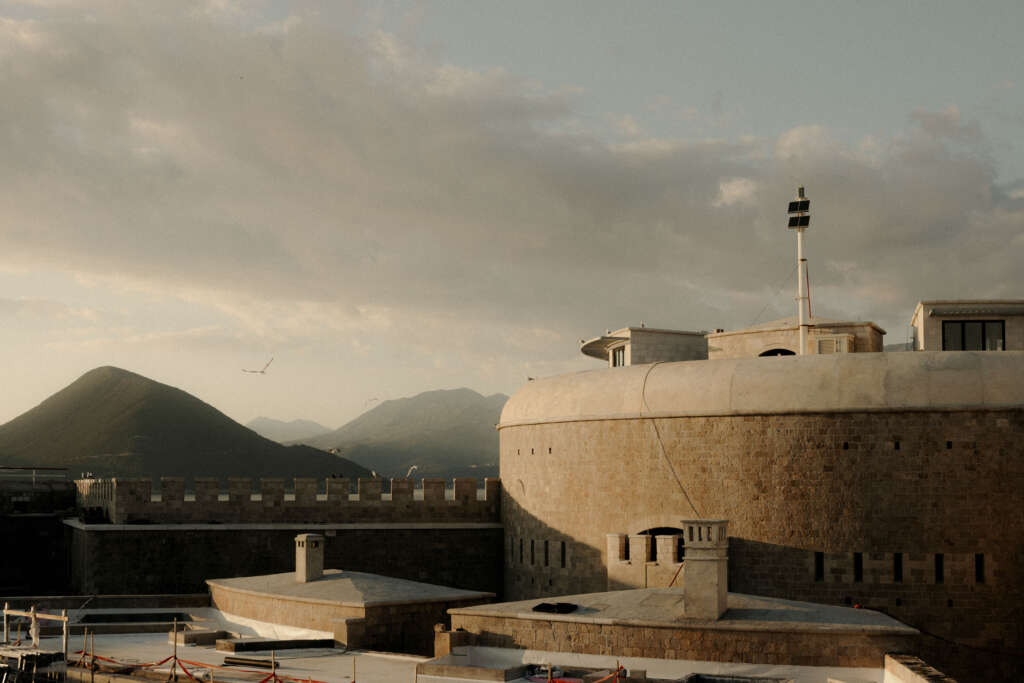
Inspired by global experiences and rooted in local heritage, Mamula Island reimagines a previously uninhabited islet and 19th-century fortress off the coast of Montenegro. Softly opening this month and with a full-scale opening in April, the historically renovated structure is augmented with bespoke, modern furnishings to offer guests a sophisticated one-of-a-kind experience. Onsite amenities include a fine-dining restaurant with a continually changing seasonal menu, two all-day eateries with more casual fare, a lavish spa in the former fortress tower, three fresh- and saltwater pools, and a serviced beach—all of which is encircled by sea and sky, with far-reaching views of the crystal-clear waters and wild scenery beyond.
Located at the entrance of the Bay of Kotor and part of a UNESCO World Heritage Site, Mamula Island is a carefully restored 19th-century fortress off the coast of Herceg Novi, Montenegro. With Lisbon-based studio MCM Architecture & Design leading the architectural concept and Piotr Wisniewski and his agency weStudio Berlin overseeing the interior design, everything at this new property has been designed to give guests time to think, move, make, meet, soothe, and share. After a thorough and extensive restoration process, the hotel is formally opening to inaugurate its seasonal operation in April following a soft launch this month.
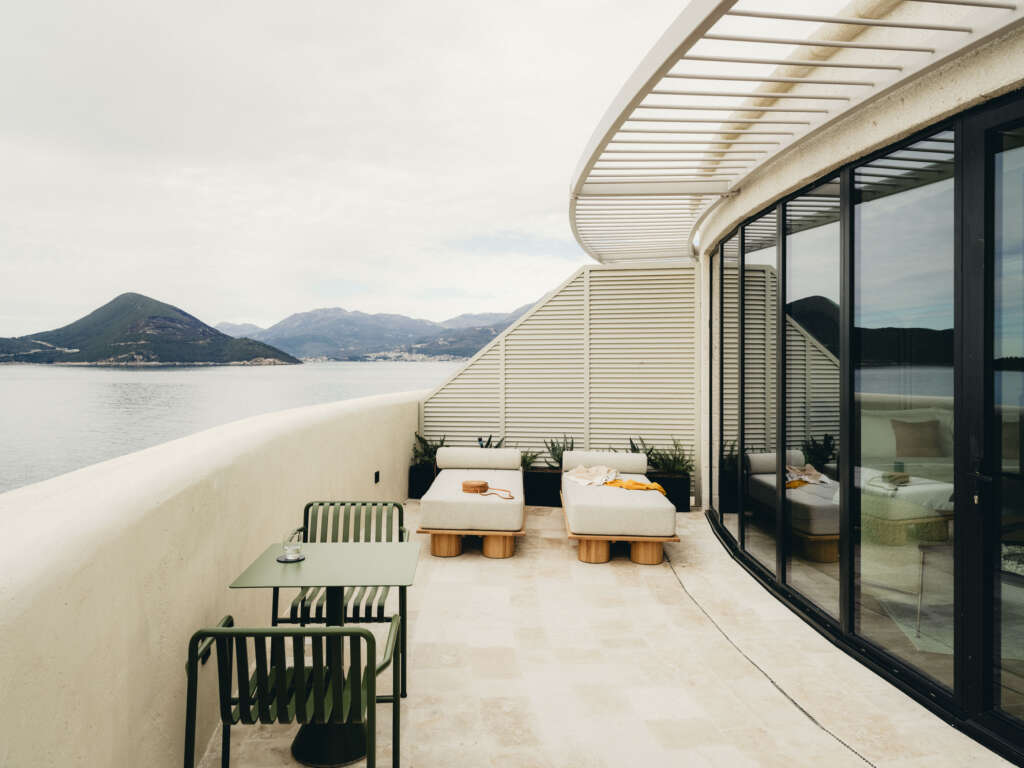
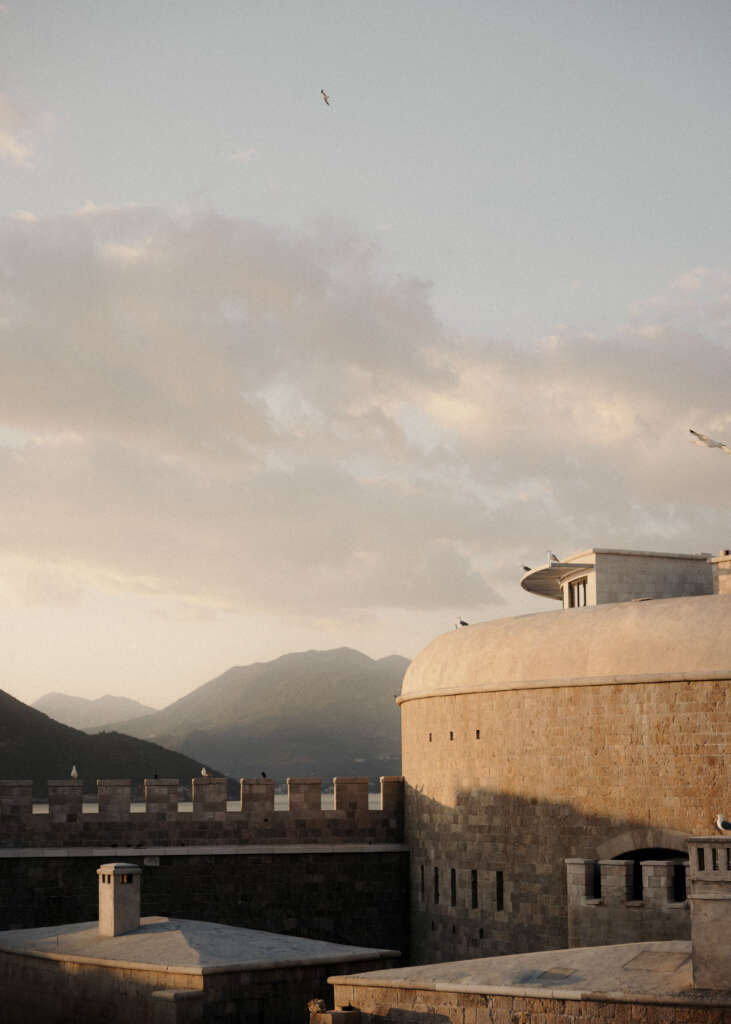
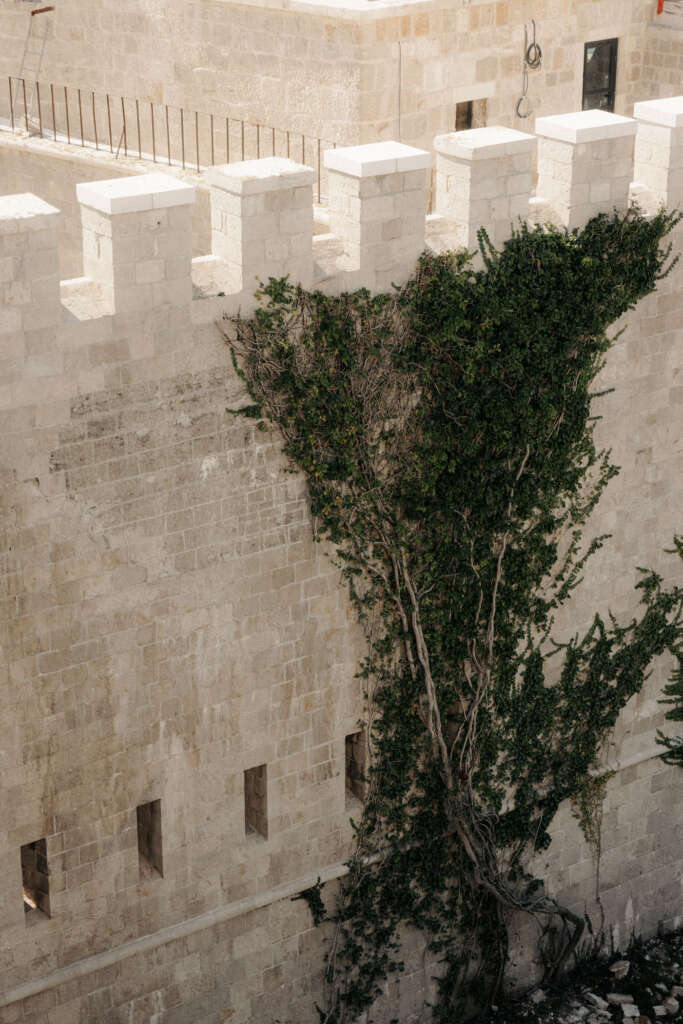
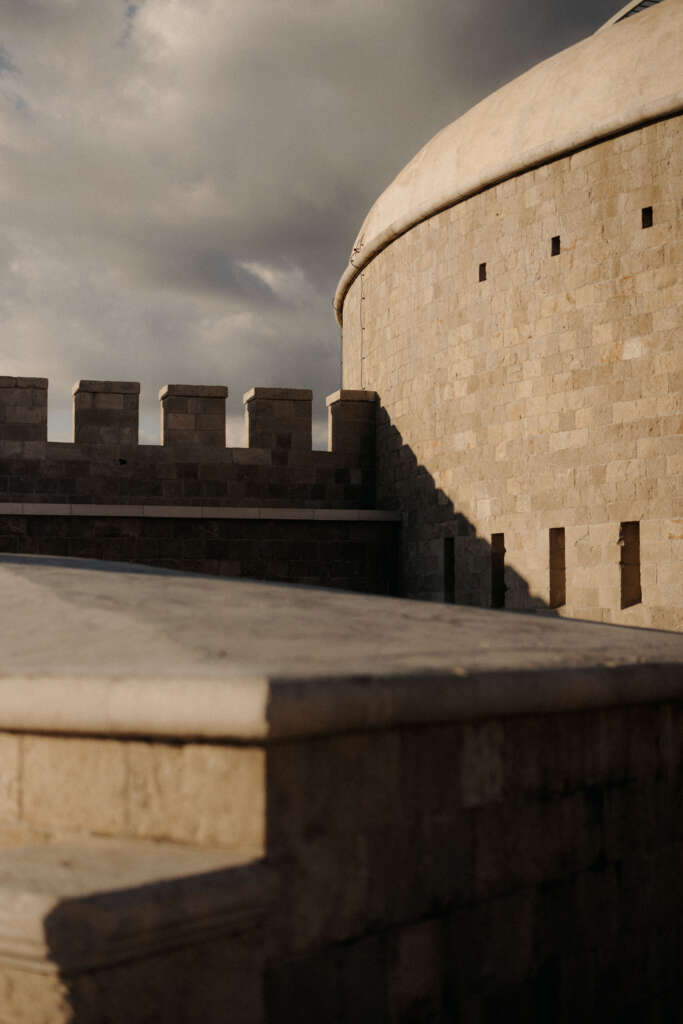
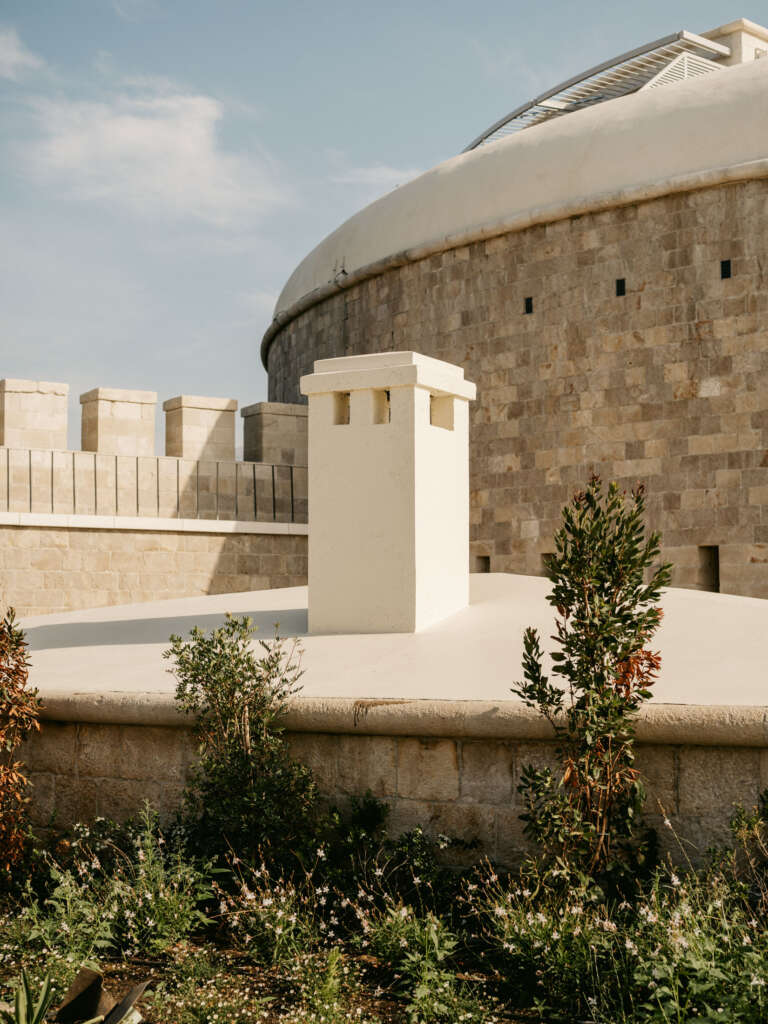
The island itself is of historical importance and holds sentimental value among locals. As such, MCM worked closely with heritage authorities on the entire restoration process to bring the original beauty of the building, constructed in 1852 by the Austro-Hungarian general Lazar Mamula, to the fore. Simultaneously, Piotr and weStudio found inspiration in regional cultural references and the heritage of local artisanal trades, including pottery and traditional carpentry techniques, as well as minimalist mid-century styles and abstract art. Combined, these references create a distinct design language that is at once sophisticated and refined yet deeply connected to the vernacular of the island and region.
Both the architecture and design concepts are united through the motif of the arch, a symbol of strength and support as well as renewal and openness, which dominated the original fortress. In ancient mythology, arches and doorways were seen as thresholds between time and space; in more modern times, they became symbols of the expansiveness of the sky. When renovating the existing building and adding new spaces, this motif was recreated by MCM in many of the interior structures. It was also the starting point for the custom geometrical furniture designed by weStudio that is found throughout the hotel. Although the majority of furnishings are bespoke, select lamps, chairs, and lounge pieces by Gubi, Roda, Santa&Cole, Flos, and Menu are also found in guestrooms and communal spaces. Meanwhile, the overarching color palette and materials draw directly from the island’s landscape: natural, earthy tones mix in contrasting harmony with bright hues of the sky and sea; local stone and solid oak are complemented by aged brass and breathable, organic textiles.
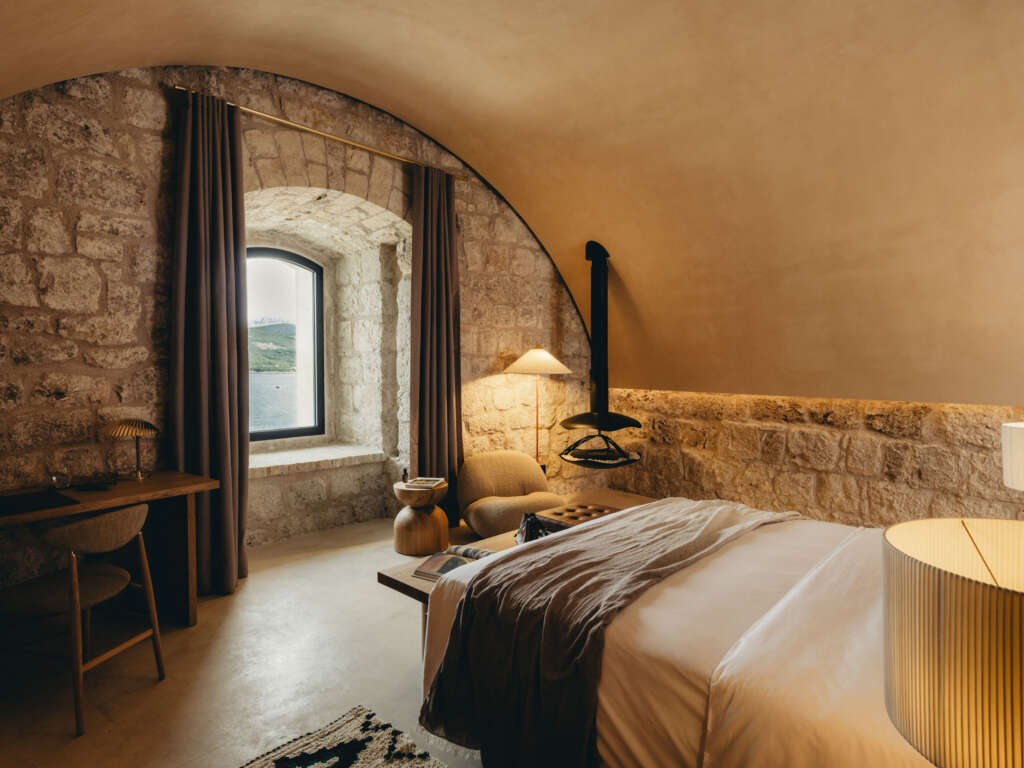
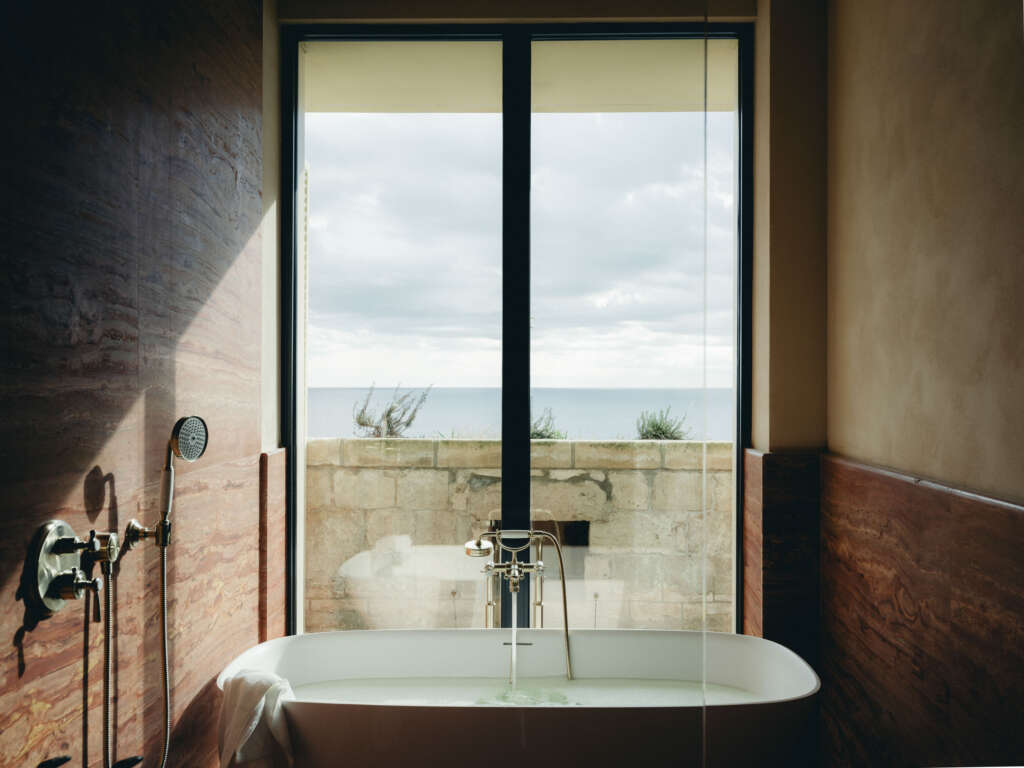
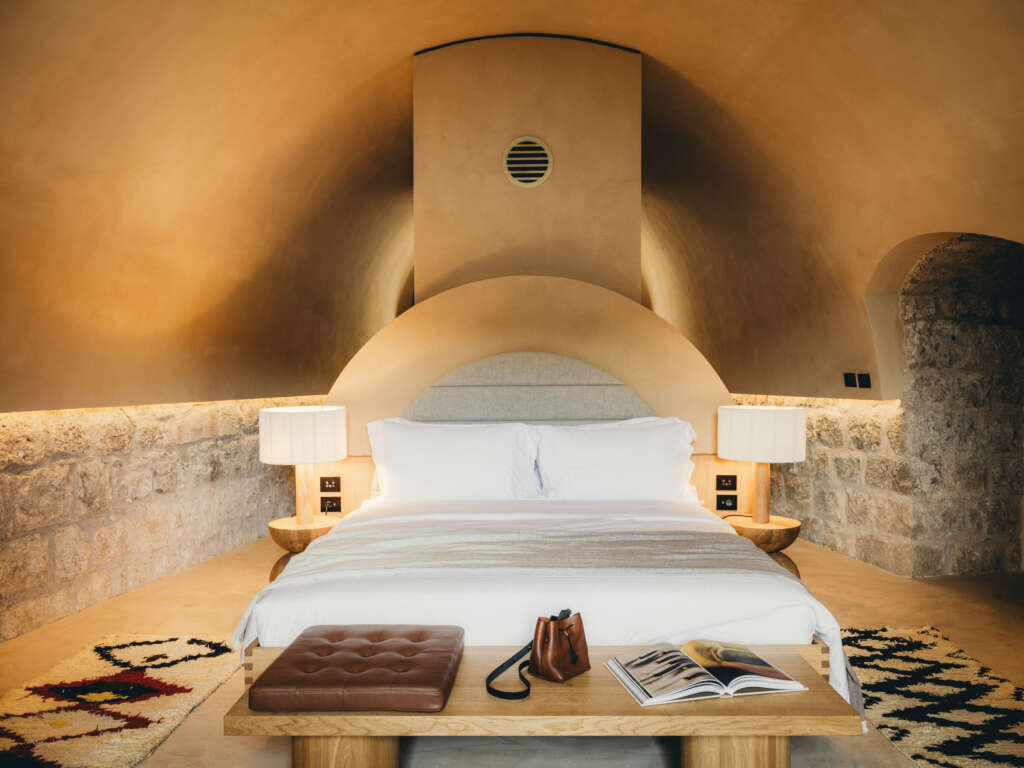
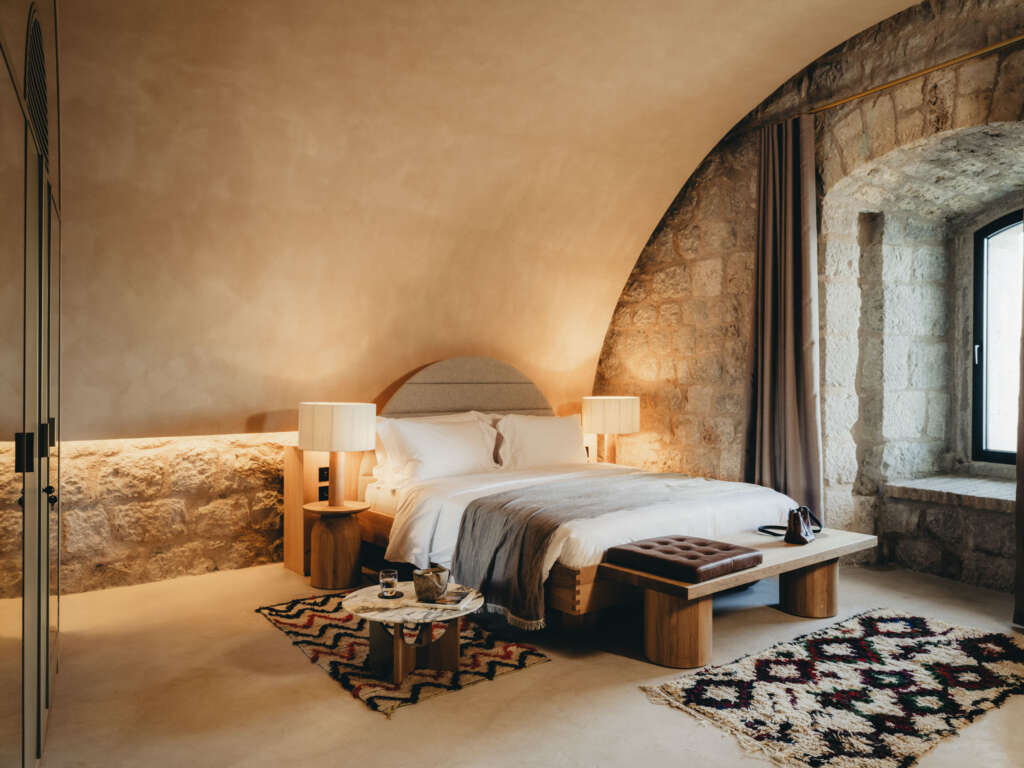
Mamula Island offers four room categories—Garden, Sea, Sky, and Panoramic—with a total of 10 rooms, 14 junior suites, and 8 suites. Garden rooms and Panoramic rooms and suites are located in modern additions to the fortress, featuring floor-to-ceiling windows and private terraces. The Sea junior suites and Sky suites are situated within the historic structure and include original windows and stone features. Some Sky suites even feature original frescoes on the ceilings, and two also boast private Jacuzzis. Plus, 31 of the 32 guestrooms have cozy private fireplaces, and all rooms feature bespoke furniture designed by weStudio, a curated selection of artworks by local artists, toiletries developed by the all-natural Swiss spa brand Ananné with a custom Mamula scent, and stunning sea views.
Each of the three restaurants and a specialty mixology bar has a distinct identity, united through a focus on seasonal, local products. At the heart of the island and fortress’s footprint, under the open sky, the Pool Deck offers a casual all-day restaurant and bar, located next to three pools—one freshwater lap pool and two circular relaxation pools, one with freshwater, the other with salt—with sunbeds and lounge furniture. The Pool Deck’s à-la-carte menus focuses on comforting Mediterranean small bites, like pickled vegetables in acacia vinegar or oyster ceviche with rhubarb, white asparagus, and verbena oil, as well as main dishes, like homemade cheese-and-hazelnut ravioli or saffron-pumpkin tortellini.
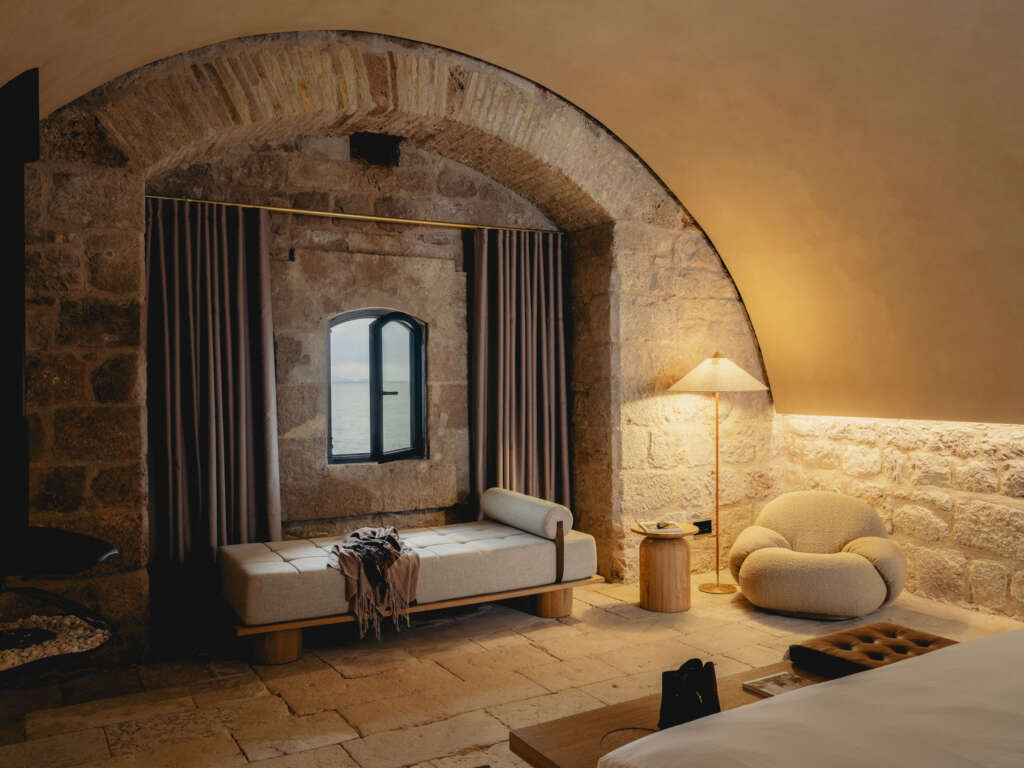
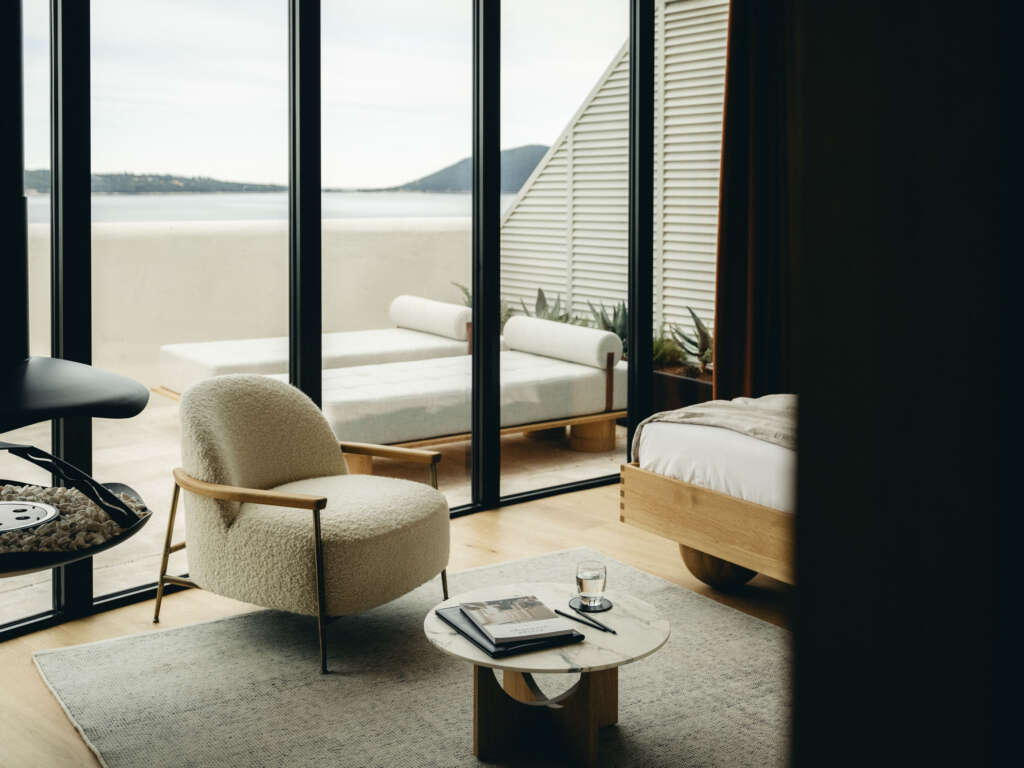
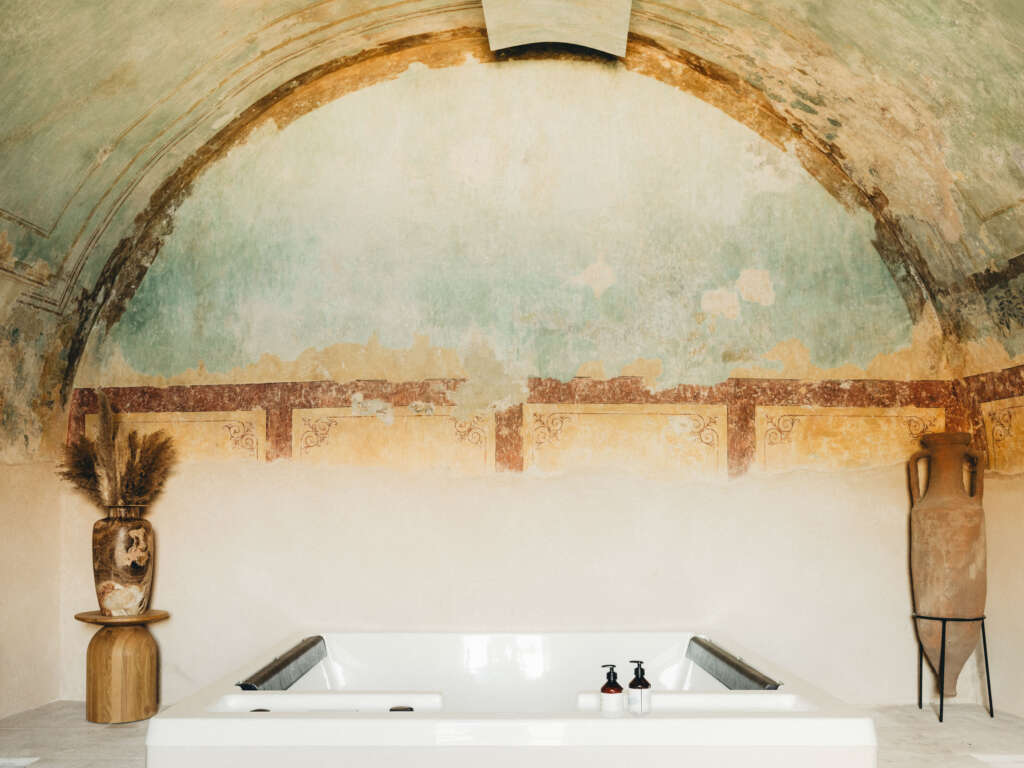
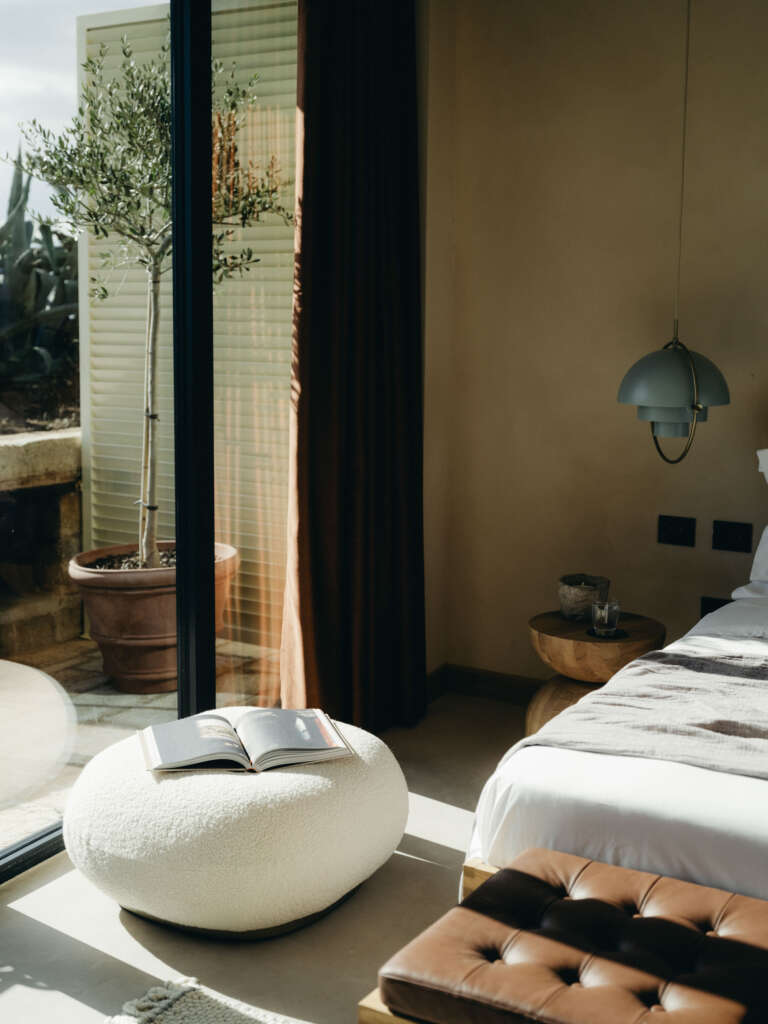
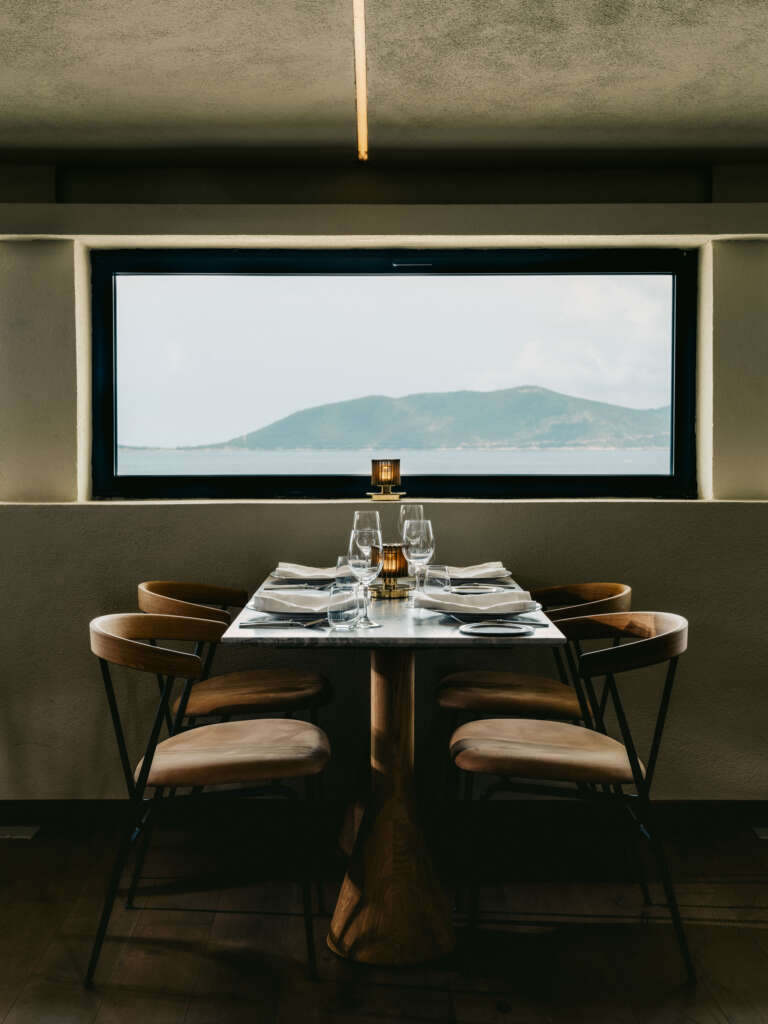
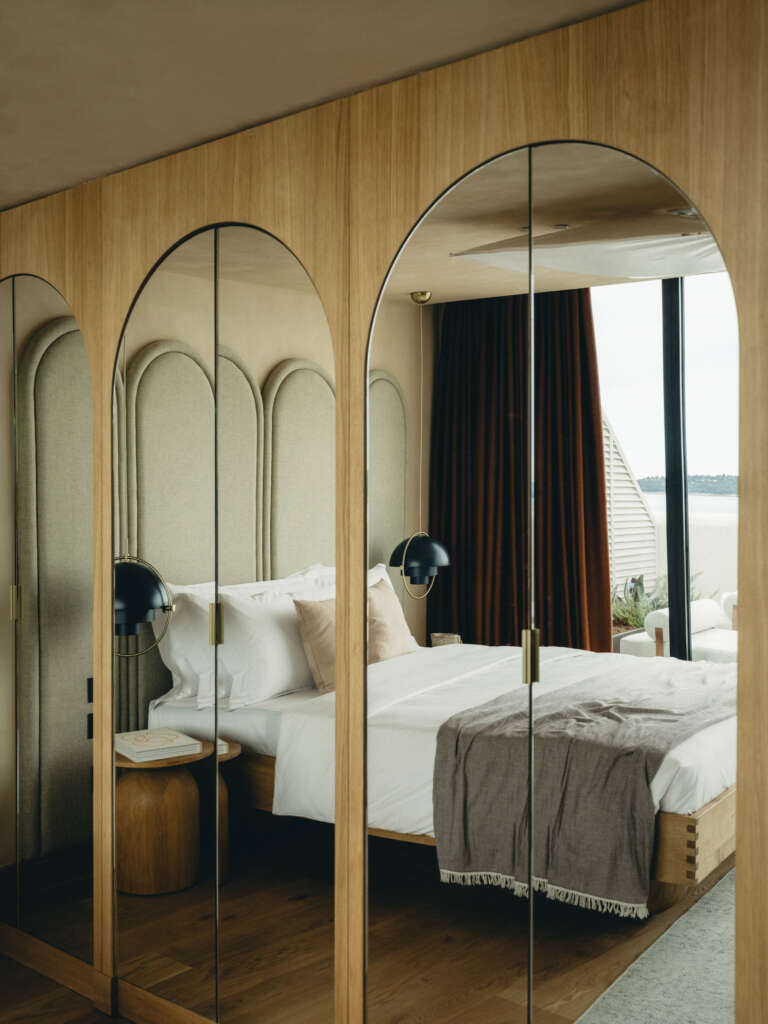
Another central feature of Mamula Island is the spa, housed in the ground level of the fortress’s main tower. Here, guests can restore, release, and revive their minds and bodies through massage, facial, and body treatments performed with Ananné premium organic natural skincare. Beyond treatments—which are carried out in one of two rooms or the couples treatment suite and combine traditional techniques with forward-thinking therapies—the spa also boasts an indoor gym, two ritual rooms, a Finnish sauna, an herbal sauna, a stream room, a halotherapy room, and an aqua floating tank. Communal, private, and bespoke activities such as yoga, meditation, breathwork, sound and energy healing, and ritual-oriented remedies are also offered.
Other standout spaces on the island include Atelier Mamula, a 64-square-meter creative room that hosts an artist-in-residence program, as well as Studio Mamula, a 112-square-meter makerspace equipped for a range of events, including workshops, live music performances, and film screenings. This season, the hotel is hosting three artists, for seven days each, in collaboration with Balkan… Projects, an initiative that aims to bring awareness to rising regional artists on an international level. The resulting projects will be showcased in small exhibitions held onsite and open to the public throughout the summer, during which time there will also be four musical events held in collaboration with Herceg Novi’s Operosa music festival. And to shed light on the island’s long history, which includes periods of misuse as a prison during World Wars I and II, the property has constructed a memorial gallery open to the public year-round, including when the hotel is closed during the winter months.
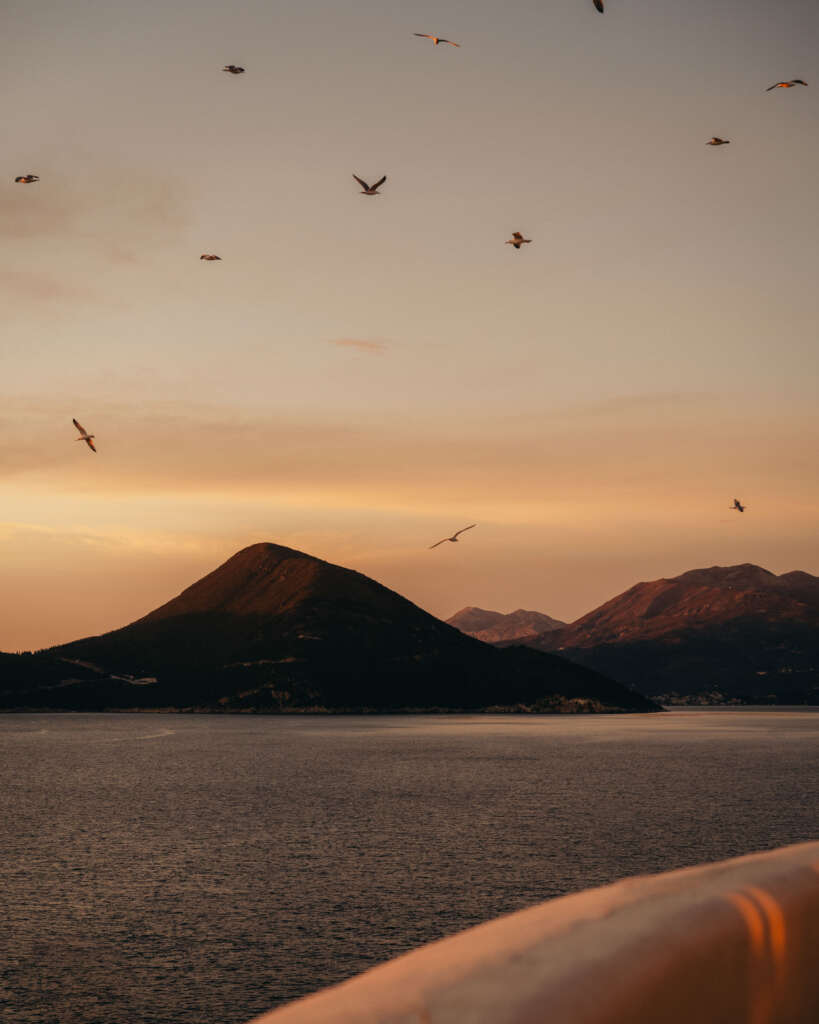
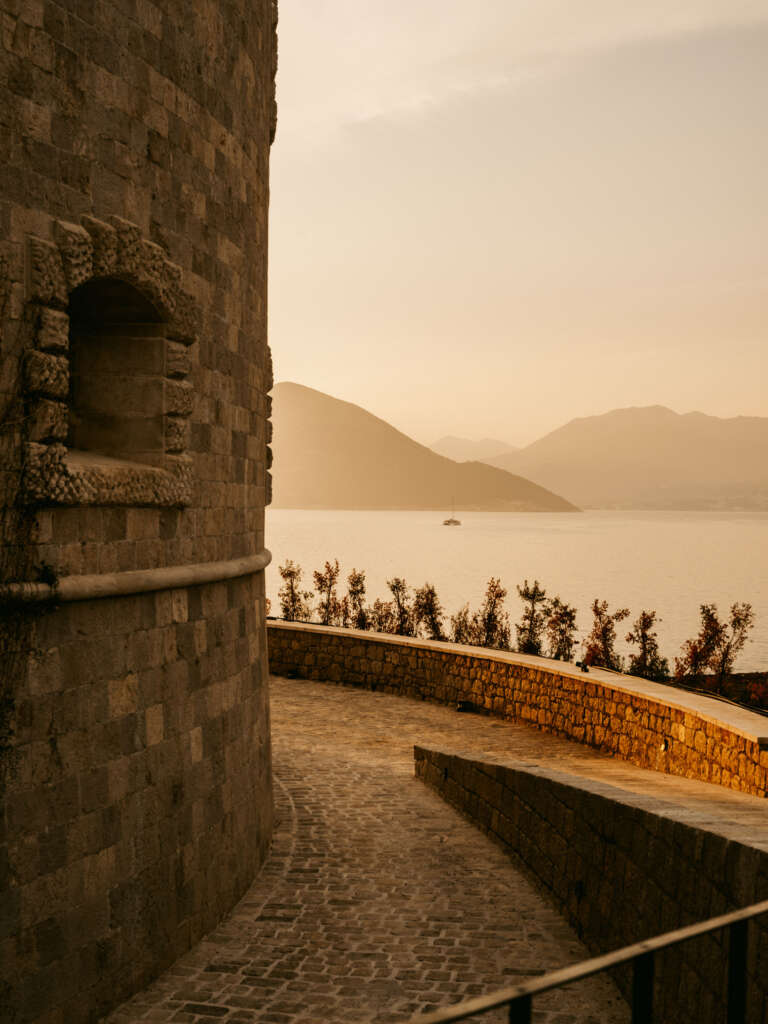
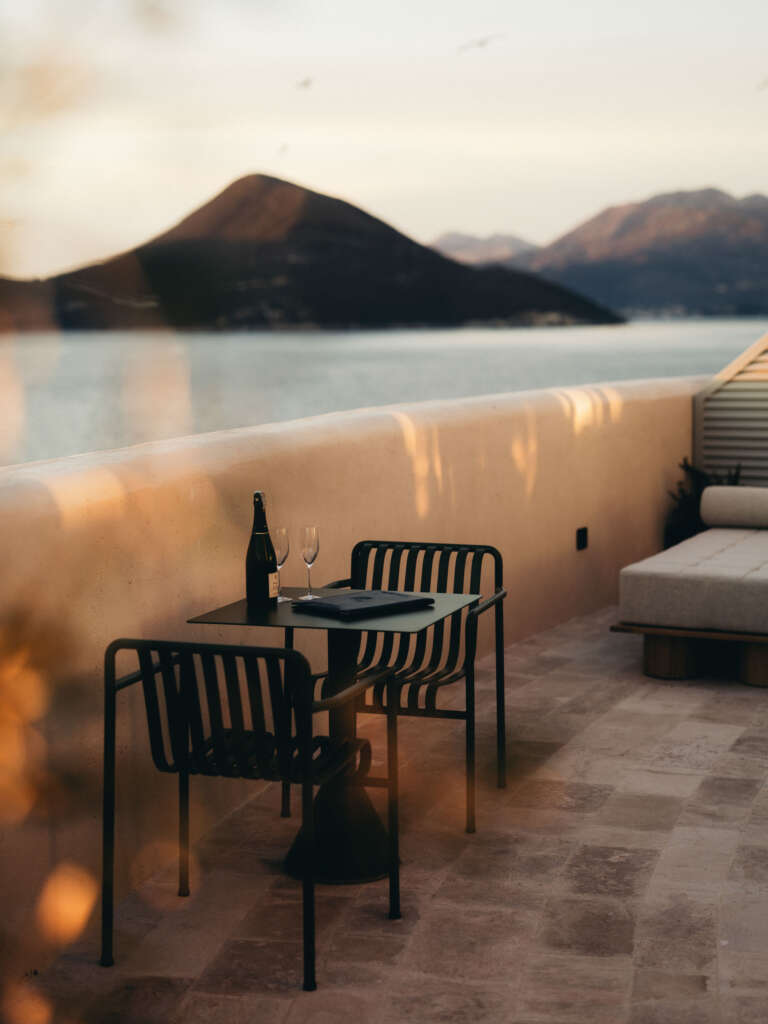
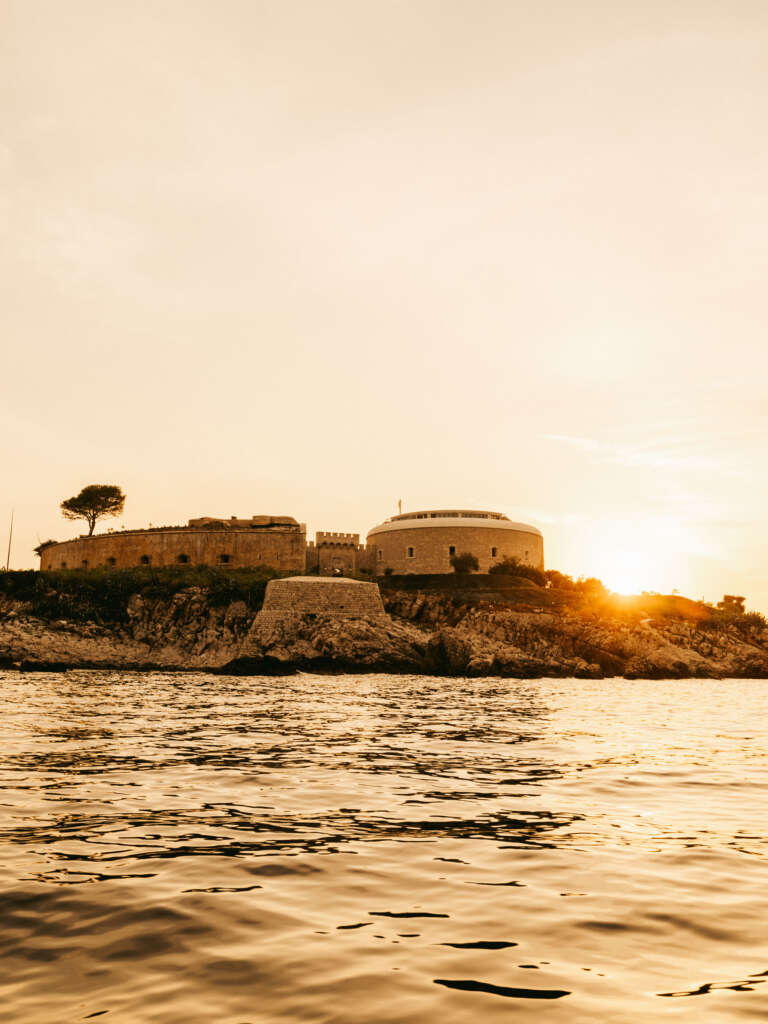
Mamula Island also organizes cultural excursions and activities for guests on the mainland. A range of watersports equipment, including kayaks, stand-up paddle boards, and water bikes, are available for complimentary use to explore the sheltered bay of Mirista. Complimentary electric bikes are also available to enjoy the undisturbed trails of the Luštica peninsula. A number of private experiences can also be booked, including tours of Boka Bay, Lake Skadar National Park, and the city of Herceg Novi.
Destination
“You can eat breakfast on the coast in the sun in a T-shirt and then drive 45 minutes and ski—that, in a nutshell, is Montenegro,” says Henning A. Schaub, General Manager of Mamula Island. Indeed, this tiny destination, which is regularly overlooked in favor of flashier Balkan destinations like Croatia, is becoming favored by those seeking low-key getaways with great beaches, a fascinating mix of cultures, and excellent Mediterranean cuisine.
Mamula Island itself is positioned at the entrance to the Bay of Kotor, a UNESCO World Heritage Site. The land, also known as Lastavica islet, was an optimal place to build a fortress to protect the region and its waters—or at least so thought Austro-Hungarian general Lazar Mamula. In 1852, the general opened the doors to a sprawling stone stronghold, and the fortress and small island have been referred to as “Mamula” in his honor ever since. During World War I and II, the fort was misused as a prison by Austrians and Italians, respectively, but for the last 70 years, it has been in a state of disuse—a history that can be explored in-depth in the location’s dedicated memorial gallery. Now, the circular islet, which is only 200 meters in diameter, has been re-enlivened as a landmark destination for overnight guests and day-visitors alike.
Mamula Island can be reached by air or boat. There is a helicopter pad on the island, and complimentary boat transfers are provided from the shores of Herceg Novi, Montenegro. The nearest airports are Tivat (TIV), Dubrovnik (DBV), and Podgorica (TGD). Private boat transfers can also be arranged directly from TIV upon request.
The above story is courtesy of Design Hotels.




